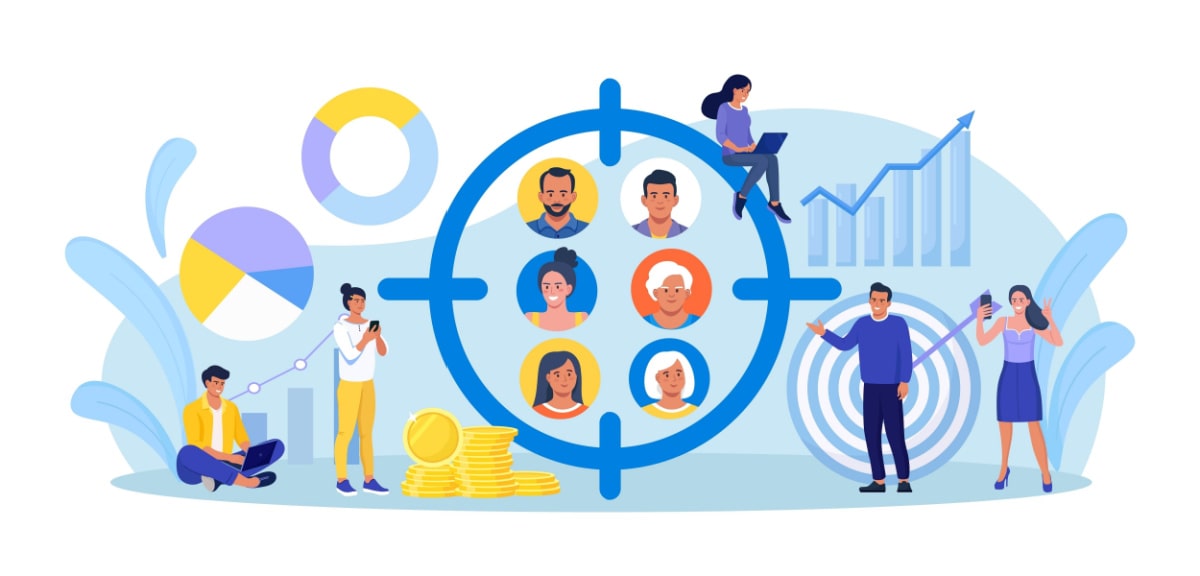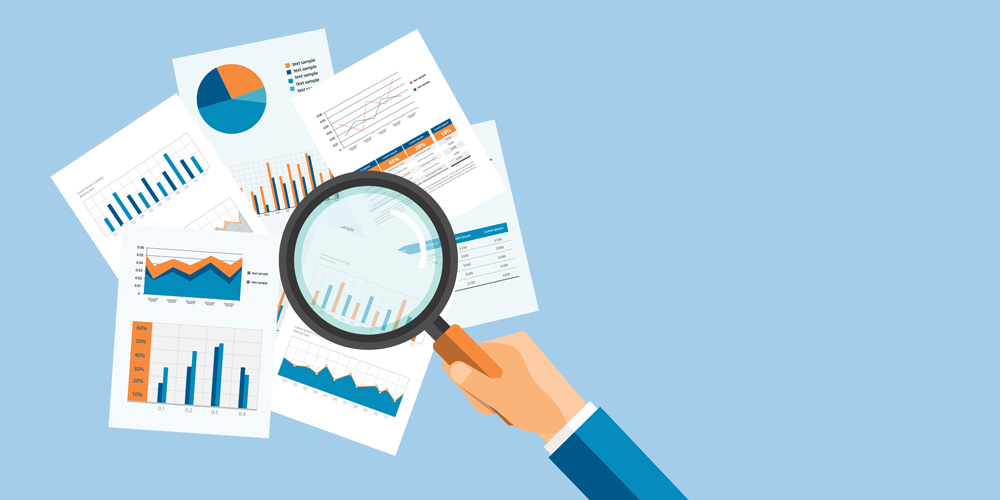Lead scoring proposes a different approach to customer acquisition. This method detects the proximity of a brand’s prospects to the act of buying. It focuses on the “best” potential customers: this classification greatly simplifies lead management. Thanks to recognized scientific sources, we clearly define lead scoring. We also explain the 4 reasons why this concept boosts your sales performance.
Contact us for your B2B market research
Summary
What is lead scoring?
Lead scoring tends to classify a brand’s leads according to their profitability. Benhaddou & Leray, 2017 indicates that this process falls under customer relationship management. Generally, this score is calculated according to two intrinsic criteria of the lead:
- its characteristics: sector of activity, responsibility within the company, size of its structure, and so on
- and his behavior: customer experience, contact history, interest in an offer, etc.
Ultimately, lead scoring translates the prospect’s “potential,” i.e., his propensity to become a customer. By doing so, brands can:
- select their priority targets
- create privileged contacts with them
- but also personalize their marketing strategies.
Duncan & Elkan, 2015 goes even further. Indeed, it would be one of the most effective methods to qualify their prospects on lead management systems. It all depends on the model used to perform the scoring. And for a good reason, the most predictive systems provide valuable data to get highly qualified leads. Finally, a good lead-scoring model would be a significant advantage for improving internal collaboration. (Wu et al., 2023)
The inextricable links between lead scoring and marketing automation
Here we are interested in the positive contribution of marketing automation on lead scoring. In this case, Nygård & Mezei, 2020 analyzes the connections between machine learning and lead scoring. So, the research’s objective is to assess prospects’ purchase probability. The authors, therefore, compared 4 recognized machine-learning approaches to automating this scoring. Their conclusion is clear: random forest classifiers perform best for 2 reasons:
- the overall performance score is higher than the other 3 systems researched
- their ease of interpretation.
Also, as mentioned in the introduction, lead scoring simplifies the contact between marketing and sales teams in the same structure. Then, lead scoring automation makes sense: it separates prospects according to the brand’s needs. In other words, some will be transferred to the sales department, while others will remain in the marketing managers’ databases (Järvinen & Taiminen, 2015)
4 benefits of lead scoring on sales performance
As promised at the beginning of the article, in this section, we focus on the advantages of this marketing tactic. According to the findings of February 2023 research, there are 4 such benefits:
- more customer conversions
- lower customer acquisition efforts
- increased brand revenue
- identification of the best leads
Lead scoring is ideal for increasing conversion rates
This marketing process smoothes the flow of leads through the marketing funnel. As a result, it increases the number of customer conversions. The predictive model of Kazemi et al., 2015 gives us some insight into this regard. This research exploits lead scoring and determines which prospects are most likely to purchase. Through this method, the authors can increase customer satisfaction.
IntoTheMinds assesses the satisfaction rate of your customers
When applied to a furniture manufacturer, the model was shown to be effective on several levels:
- Administrative costs: down 8% over the year
- Profits: up 15% over the previous year
- Sales: more customers due to increased conversion rate.
Case research at Coca-Cola shows very encouraging results. In addition, Meire et al., 2017 demonstrate the cost-effectiveness and efficiency of lead-scoring systems in customer acquisition. Their decision support model integrates multiple data sources: social networks and financial gains. The system boosts the response rate of prospects: by +4.75% throughout the experiment. Thus, without any additional cost related to marketing efforts, the brand benefits from a financial gain of 11 million dollars!
It reduces lead conversion costs
As we’ve seen with the Coca-Cola example, lead scoring doesn’t just increase the conversion rate. It also reduces the cost of customer conversion. Wei et al., 2016 show that the customer value matrix consistently increases sales performance.
In other research, Soroush et al., 2012 manage to reduce the costs of calculating the probability of purchase in insurance companies. The companies screened reduced the number of variables used in the search for leads by 50%. The complexity of the scoring process is reduced, and customer conversions follow! In the end, this original approach to lead scoring makes it possible to find the best prospects at a low cost.
Increase revenue with lead scoring
Secondly, the increase in customer conversions enabled by this scoring leads to increased brand revenue. Thorleuchter et al., 2012 demonstrate the positive influences between:
- rate of qualified lead acquisition
- number of sales
- and reduced costs associated with purchasing and maintaining prospecting files.
The results are clear: prospect databases are more relevant thanks to these authors’ methods. Among the companies researched, the density of serious leads increases from 5% to 18%!
Customer acquisition can be a lengthy and expensive process. That’s why lead scoring prefers to identify the quartile of your best prospects.
It pushes you to focus on the best leads
Finally, identifying the most prolific leads remains the clearest contribution of lead scoring. After all, this is what differentiates it from other customer relationship management techniques. However, more is needed to identify this segment of your customer base. You also have to take into account the time variable. The best marketing teams pay attention to the best prospects of today but also those of tomorrow!
Therefore, predictive scoring has a greater impact on sales than its traditional counterpart (Wu et al., 2023). In addition, traditional lead scoring can be time-consuming to identify the best prospects. Thus, marketing efforts need to be properly rewarded, and the game is no longer profitable. Duncan & Elkan, 2015 tells us the following:
The average conversion rate is only 5% with traditional models, compared to 15% with predictive systems.
Sources
- Benhaddou, Y. & Leray, P. (2017). Customer Relationship Management and Small Data — Application of Bayesian Network Elicitation Techniques for Building a Lead Scoring Model. 2017 IEEE/ACS 14th International Conference on Computer Systems and Applications (AICCSA).
- Duncan, B & Elkan, C. (2015). Probabilistic Modeling of a Sales Funnel to Prioritize Leads. KDD ’15: Proceedings of the 21th ACM SIGKDD International Conference on Knowledge Discovery and Data Mining, 1751–1758.
- Järvinen, J. & Taiminen, H. (2016). Harnessing marketing automation for B2B content marketing. Industrial Marketing Management, 54, 164-175.
- Kazemi, A., Babaei, M. & Mohammad Javad, M. (2015). A data mining approach for turning potential customers into real ones in basket purchase analysis. International Journal of Business Information Systems, 19(2), 139-158.
- Meire, M., Ballings, M. & Van den Poel, D. (2017). The added value of social media data in B2B customer acquisition systems: A real-life experiment. Decision Support Systems, 104, 26-37.
- Nygård, R. & Mezei, J. (2020). Automating Lead Scoring with Machine Learning: An Experimental Study. Machine Learning and Predictive Analytics in Accounting, Finance and Management.
- Soroush, A., Bahreininejad, A. & van den Berg, J. (2012). A Hybrid Customer Prediction System Based on Multiple Forward Stepwise Logistic Regression Model. Intelligent Data Analysis, 16(2), 265-278
- Thorleuchter D., Van den Poel, D. & Prinzie, A. (2012). Analyzing existing customers’ websites to improve the customer acquisition process as well as the profitability prediction in B-to-B marketing. Expert Systems with Applications, 39(3), 2597-2605.
- Wei, J., Lin, S., Yang, Y. & Wu, H. (2016). Applying Data Mining and RFM Model to Analyze Customers’ Values of a Veterinary Hospital. International Symposium on Computer, Consumer and Control.
- Wu, M., Andreev, P. & Benyoucef, M. (2023). The state of lead scoring models and their impact on sales performance. Information Technology and Management.
Posted in Strategy.





